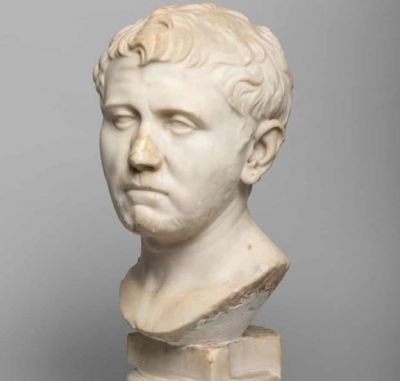Quattro anni fa, una donna (Laura Young) in Texas ha comprato un busto di marmo in un negozio dell’usato per $34.99. Non sapendolo scoprì che questo busto era una reliquia della Roma antica e pesa più di 23 chilogrammi. Young sta vendendo le cose usate da più di 11 anni e ha detto al telegiornale che cerca sempre delle cose interessanti. Ha spiegato che per trentacinque dollari è stato un affare. Dopo l’acquisto, Young portò il busto ai negozi di antiquariato per avere più informazioni. Uno specializzato ha utilizzato un database digitale per la ricerca e ha trovato foto degli anni 30 del busto a Aschaffenburg (una città nella regione di Baviera) in Germania. Con il tempo, il busto aveva confermato di aver quasi 2.000 mila anni. Secondo Lynley McAlpine, una ricercatrice del San Antonio Museum of Art, il busto probabilmente fu di proprietà di Sesto Pompeo, il figlio di Pompeo Magno, un nemico di Giulio Cesare. Il busto fu parte di una villa in stile Pompei (chiamato Pompejanum) che fu commissionato da Re Ludwig nel 1840. Pompejanum ebbe il busto nella sua collezione fino alla Secondo Guerra Mondiale quando fu messo in deposito. Da questo punto, non c’è altre informazioni del busto. Si pensava che il busto fosse stato portato negli Stati Uniti dai soldati Americani e per 80 anni fu dimenticato alla fine che Young l'aveva trovato. Il negozio dell’usato pensa che il busto sia stato in deposito per almeno 60 anni vicino a loro. Young ha spiegato che ha provato a trovare la persona che ha donato il busto per venderglieli ma non non é riuscita. Il busto adesso si trova nel San Antonio Museum of Art ma l’anno prossimo tornerà in Germania per stare con altre reliquie di Pompejanum.
A Texas woman purchased a $34.99 marble bust from a Goodwill thrift store that turned out to be a relic from ancient Rome. Laura Young, who has been reselling antiques for 11 years, came across a 52lb. marble bust in an Austin Goodwill in 2018. “I was just looking for anything that looked interesting,” Young told CNN. She added, “It was a bargain at $35 – there was no reason not to buy it.” After purchasing the bust, Young reached out to various auction houses and experts to find out more about the sculpture. A specialist used a digital database to track down the bust’s provenance and found photos from the 1930s featuring the head in Aschaffenburg in Bavaria, Germany. Sotheby’s eventually confirmed that the bust was estimated to be about 2,000 years old and came from ancient Rome. The bust probably belonged to Roman military leader Sextus Pompey, according to San Antonio Museum of Art postdoctoral fellow Lynley McAlpine. Pompey’s father was Pompey the Great, a political ally turned enemy of Julius Caesar. The bust was once kept at Pompejanum, a replica of a Pompeii-style Roman home that was commissioned by King Ludwig I and built in the 1840s. Pompejanum displayed the bust until WWII, when groundskeepers placed the sculpture and other relics in storage as the villa came under attack. For about the next 80 years, the bust’s whereabouts were unknown – until Young dug it up at a Goodwill. “It seems like sometime between when it was put into storage until about 1950, someone found it and took it,” McAlpine told CNN. “Since it ended up in the U.S. it seems likely that some American that was stationed there [during the war] got their hands on it.” Young tried to track down the person who donated the bust through Craigslist but was unsuccessful. “I would really love it if whoever donated it came forward,” she told CNN. “It’s most likely not the original person who took him, but [I] would still like to know the story.” The San Antonio art museum was loaned the bust for a year, but the piece still technically belongs to Germany because it was stolen from storage. Germany anticipates getting the bust back in May of next year and then displaying it once again in the Pompejanum.



